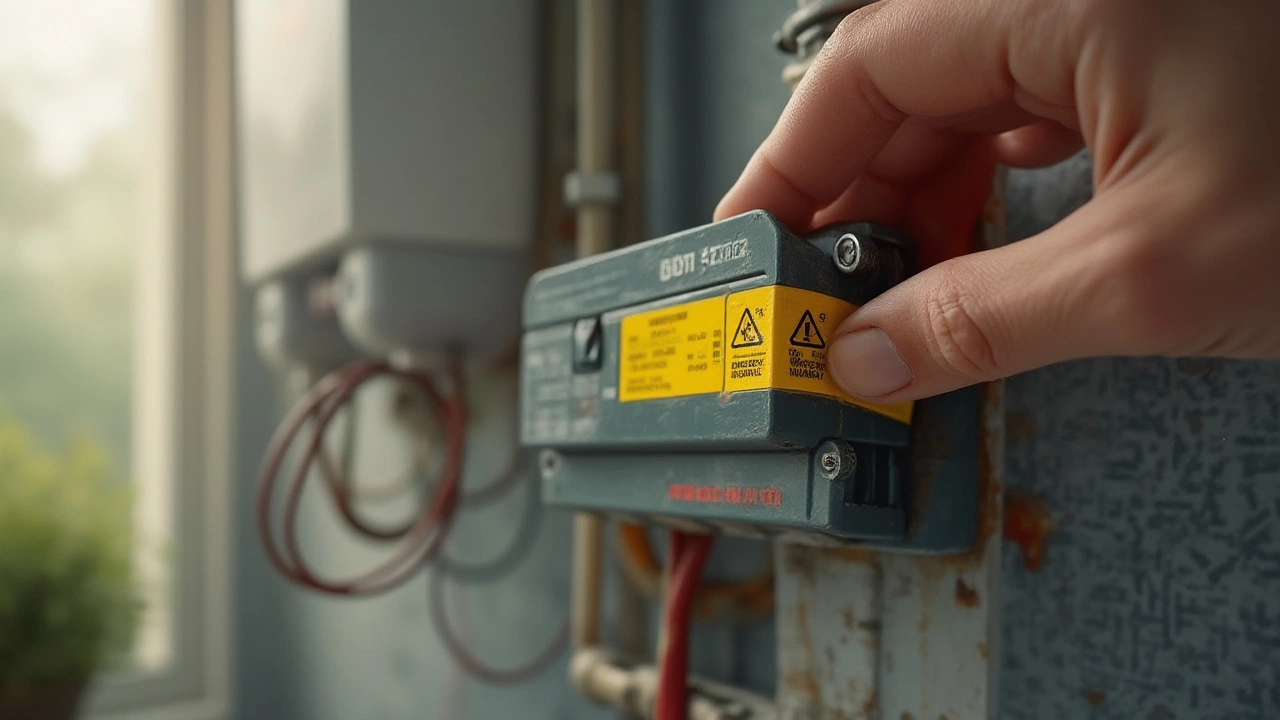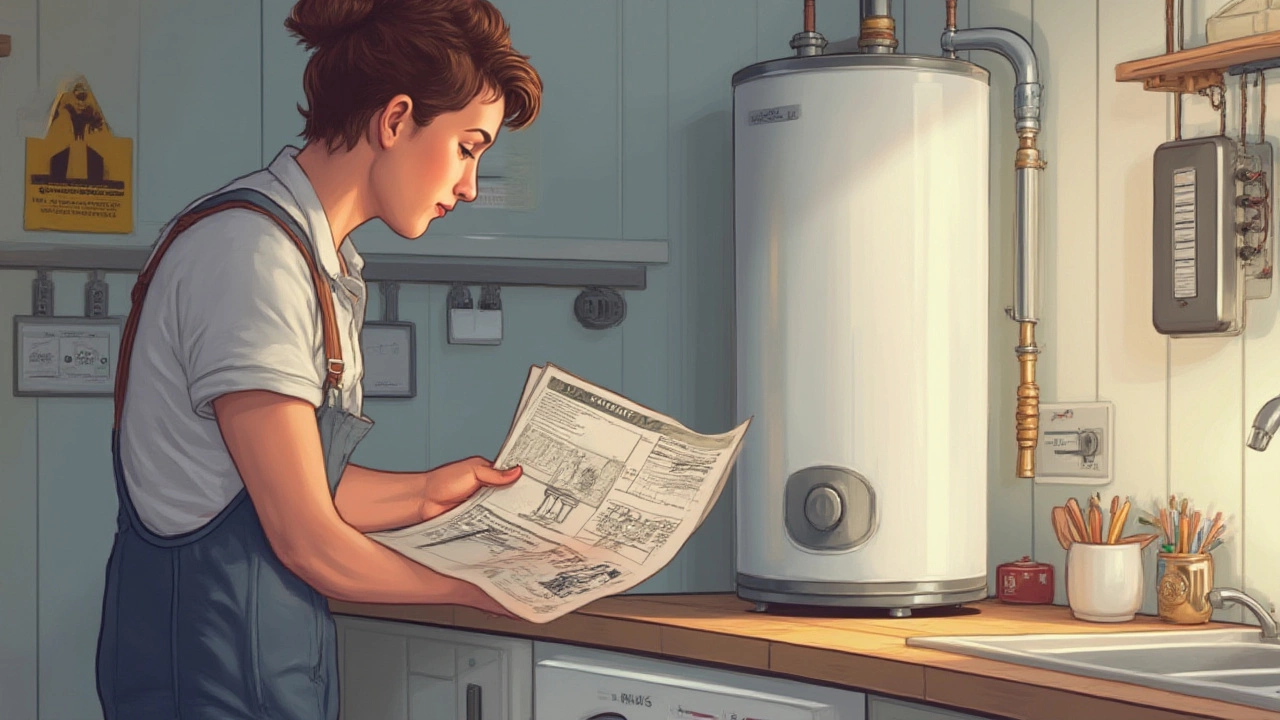The next time your morning shower suddenly turns icy, you might head for your water heater’s reset button. Seems easy until you wonder — do you really have to turn off the breaker before resetting a water heater? Skip this, and you might find yourself facing more than just another cold rinse. Across New Zealand, water heater mishaps account for a surprising number of call-outs to electricians and plumbers, especially when well-meaning DIYers leave safety behind. It’s amazing how one tiny red button can lead to so much confusion, and the answer isn’t as straightforward as you might expect. There’s more at stake here than simply relighting some hot water; it’s also about staying safe and avoiding a hefty repair bill.
Why Turning Off the Breaker Matters for Water Heater Resets
If you ask any certified electrician in Auckland, they’ll agree: electricity and water don’t mix — and a water heater is right at the intersection of powerful currents and gallons of water. Nearly all electric water heaters in modern Kiwi homes are hardwired into your home’s main supply, which means that anything you do — resetting, opening panels, or testing — exposes you to live voltage if the power stays on. The Electrical Workers Registration Board laser-focused on this, stating,
“It’s essential to isolate all sources of power when servicing and resetting water heating appliances to eliminate the risk of electrocution.”They aren’t just being paranoid. The tiniest slip, a droplet of sweat, or a misplaced screwdriver can make resetting your tank more dangerous than you think.
Water heaters draw a lot of power, typically between 1.8 and 3 kW in the average New Zealand home. If you look at the stats, WaterSafe Auckland highlights that one of the top 10 household risks for electrical accidents comes from major appliances like water heaters, where exposure is highest when panels are removed. That’s not just theory—Auckland Hospital sees a handful of admissions every year from people who’ve tried hands-on repairs without isolating the electricity. More so, newer energy-saving models have ultra-sensitive circuitry — in some cases, not shutting off the breaker while hitting the reset button can trigger more faults, tripping sensitive switches or even frying the onboard digital controller.
Let’s look at it step by step: what’s happening inside the tank? When your water heater shuts down, often because the thermal limit has tripped, hitting that reset button sends a surge through the controls to reactivate the heating element. If the circuit’s still live, you’re not just risking a surprise zap; you can short-circuit your system. Sometimes, people report a “crack” sound the moment they press the button with the power still on. That sound? A spark bridging a live wire and grounding itself — a tiny arc, but one with the potential to set off a chain reaction. If you’re not lucky, you can blow a fuse or melt a wire. Basically, if the Electrical Code says, “Isolate the circuit before working,” there’s good reason for it.
That’s why experienced tradespeople always recommend flipping the breaker at your switchboard before you do anything with your hot water system. Even if you’re only planning a quick reset, it’s not worth playing Russian roulette with 230 volts. Your future self—and wallet—will thank you for a little extra caution. Plus, the lifespan of your heater is usually better if you prevent small surges during resets. If you’re in a rush, at the very least, use a non-contact voltage tester to double-check the power’s off. For anyone curious where all those stats come from, here’s a quick look:
| Risk Factor | Related Incident Rate (NZ, per year) | Source |
|---|---|---|
| Home electrical accidents (all appliances) | 200+ reported injuries | ACC, WaterSafe Auckland |
| Hot water heater repair mishaps | 15-30 hospital cases | Auckland Hospital Admissions |
| Live voltage appliance work | 5-10 home fires traced | Fire & Emergency NZ |
So, long story short: yes, you should always turn off the breaker before resetting your electric water heater. It’s not just a good habit — it can be a lifesaver.

Step-by-Step: How to Safely Reset Your Water Heater
So, you’re standing in front of your water heater, ready to get things flowing hot again. Don’t wing it. Here’s how to safely reset your heater, based on real-world best practice from Kiwi electricians and water heater manufacturers.
- Turn off the breaker for your water heater. Head to your main switchboard — usually found in the garage, laundry, or hallway cupboard. Look for the label “Hot Water” or “Water Heater,” and flip that switch to “off.” If it’s not labeled, better to play it safe and turn off the main power for a few minutes.
- Wait at least five minutes. This gives residual current time to dissipate, and is especially helpful if your heater just tripped off. Some tanks have large capacitors that can store charge for a short time after power-down — don’t skip this step.
- Locate your water heater’s access panel. For most electric models, especially those installed after 2010, it’s a small rectangular cover held down by screws. Grab a Phillips screwdriver. Remove the panel and you’ll see insulation — pull it aside gently to reveal the inner thermostat and reset button.
- If needed, check for moisture or leakage in the compartment before touching anything inside. Caught a whiff of burning or see scorch marks? Don’t touch it — best to call an electrician.
- Press the reset button. Usually, this is a red bump or square with “RESET” written on it. Use your finger (not a tool), and press until you hear a click. If it feels loose, sticky, or doesn’t click, your thermostat or safety switch might be faulty.
- Reassemble the panel, put the insulation back as you found it, and screw everything tight. Make sure no wires are exposed and nothing’s pinched or crimped inside the panel.
- Turn your breaker back on. Head back to the switchboard, and flip the water heater breaker to “on.”
- Listen for a “whoosh” or gentle humming — a sign the heating element just powered up. If it trips right away, don’t reset again. There’s likely a deeper issue that needs professional help.
- Wait 30-60 minutes for water to heat up; tanks usually need about an hour to reach max temp. Test your hot tap after an hour — still cold? Time to bring in a licensed plumber or electrician.
Resetting more than twice in a row isn’t a good sign. If the breaker or button keeps tripping, your system might have a deeper issue: a bad thermostat, burnt-out element, or even scale buildup causing overheating. Pushing for a DIY fix here could make things go from expensive to disastrous, so know when to stop.
If you own an older water heater (pre-2000), open the panel cautiously — wires and connectors inside can sometimes become brittle. Even today, some old water heaters in heritage Auckland bungalows or beach baches have non-standard reset setups (some even wired to in-wall switches or timer units). If you’re scratching your head over anything, snap a pic and contact a local trade pro. Don’t guess with high voltage.
A quick tip: put a sticker on your switchboard labeling the water heater breaker clearly. When you’re trying to reset things in a hurry, it’s one less thing to stress over.

Smart Tips and Common Mistakes to Avoid with Water Heater Resets
If you’ve ever been tempted to just “wing it” with your water heater, you’re not alone — but you might be risking a lot more than a quick fix. The number one mistake people make? Not shutting off the power at the breaker. But here’s where folks get into hot water (literally): they reset the heater, and when it doesn’t work, they keep pressing the button. Each time you try when the tank’s still powered, you’re increasing the wear on delicate internal components and risking a bigger electrical short. If that breaker keeps tripping, something’s genuinely wrong under the hood, and no amount of button-pressing will fix it.
- Don’t ever try to reset a water heater if you smell gas (on gas models) or see water pooled around the tank. Both are emergencies — evacuate and ring a pro.
- If your water heater is outside and has been exposed to flooding or deep frost, don’t touch buttons or open panels — let a licensed tech inspect it first.
- If you hit the reset and it instantly trips again, resist doing it over and over. Thermostat or element faults need real repair, not just another poke.
- If your breaker isn’t labeled, get it sorted. Unmarked switchboards are a headache during emergencies.
- If you’ve got young kids or curious pets, always shut the panel tight. Some reset button covers in older units aren’t that secure, and exposed wiring is never a good idea around little hands or paws.
- If you live in an area with frequent power surges (rural Auckland sees this after big storms), install a surge protector for major appliances. Not only will this save your heater from sudden spikes, but often your insurance premium reflects this safety upgrade.
Got a holiday home? Before leaving it empty over winter, always turn the breaker off. A dormant but powered heater can overheat or even trigger a fire if rodents chew through insulation. Plus, the next person arriving won’t be greeted by tepid water — you can power up safely on your return, and repeat your reset steps if needed.
Here’s a real-world twist: in some newer eco-friendly or WiFi-enabled heaters, the reset process might involve following a digital interface onscreen or using an app. Even then, most manufacturer guidance (from Rheem, Rinnai, or Bosch) still insists that any time you’re troubleshooting beyond a software reset, you should shut off the physical breaker. When in doubt, check the manual, or scan the QR code on your unit for manufacturer’s online advice. “Safety isn’t just about rules; it’s about knowing when you’re out of your depth,” as one Master Electrician in Auckland likes to say — usually after seeing another scorched panel from a reset gone wrong.
Resetting your water heater isn’t rocket science, but the stakes are higher than you’d think. Make flipping that breaker second nature every time you go to reset, and you’ll save yourself hassle, money, and maybe more than a few cold showers.


